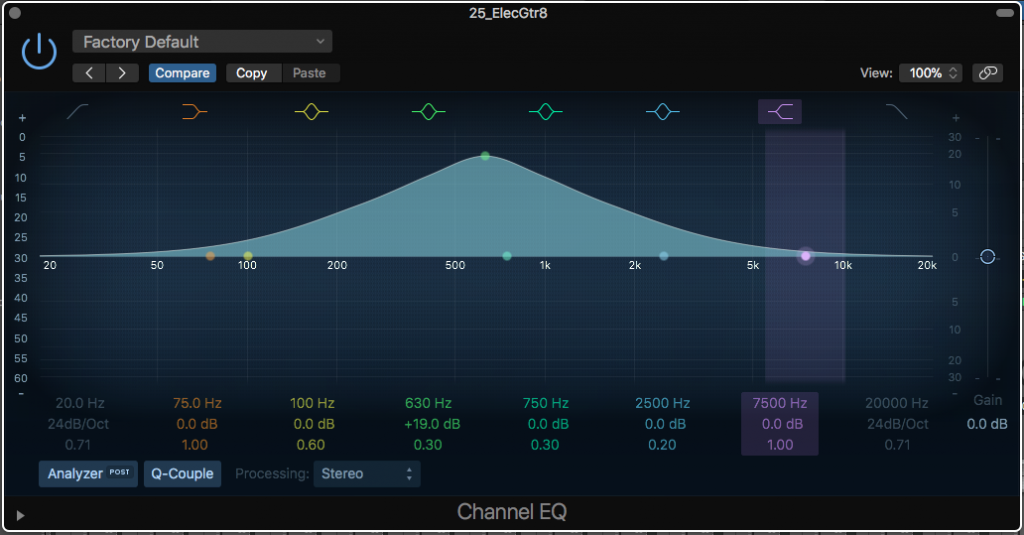Hey Guys!
I had someone come to me with a question today about “how to EQ something”. I get this question a lot and it can be a complex question to answer so I’m going to give three tips on how to make decisions based on EQ.

1. Search and Destroy
This is the most common way of combatting EQ and typically the easiest to hear. The process is simple. You take a band on any EQ and you boost it dramatically! And you start in the lows (left of EQs typically) and “sweep” the band to the right. It will all sound a little unnatural and weird but once you get to a point where the EQ is boosted and you however over something that sounds bad your mind will think “THAT, that is what is making this track sound bad”. So now that you’ve found the issue, pull the gain down! And now you have “destroyed” the problem you were “searching” for. The second great part about this technique is that it trains your ears. Once you keep finding the problem spots, your ears will familiarize that “300Hz to 500Hz is where kick drums sound muddy” and “800Hz to 1.5kHz is where vocals sound nasally”. So if you’re just starting out, use some search and destroy!

2. Puzzle Piece Theory
Puzzle piece theory is a term I made up but it’s a theory that many engineers follow. Puzzle piece theory is the idea that all the tracks in a project fit together and take up their own amount of space. I mentioned the idea of this theory briefly in my post “Parallel Vocal Processing”. So imagine this. There’s an elec
tric guitar and a vocal. The electric guitar sounds great and it’s nice and up front but the vocal seems buried. So you turn down the guitar. But now the guitar is buried. These two tracks are fighting because they are not fitting together. The reason they are not fitting together is because one of their primary defining frequency ranges are within the same range. So you can leave the guitar and vocal at the same level and they’ll be buried. However, if you cut anywhere between 700Hz to 1.3kHz it will sound like your turning the vocal up! Now both can co-exist! This applies acorss the board. One of the biggest rules of mixing is that everything effects everything else. For example, when I mix Kicks and Bass guitars I will give kick drums a boost around 60-80Hz and CUT 100Hz in order to make room for the bass. Now THIS is the crazy part I will put a (wait for it) High pass filter on my bass! (*GASP*). The high pass filter will cut anything below 70Hz and then I’ll add a little bump around 100Hz. So now the Bass guitar lives around 100Hz and the Kick drum lives around 70Hz and one is not muddying up the other!

3. Check Your Work
So you’ve made an EQ on a track and you generally like how it looks and it’s not clipping on the output and when the track is solo’d it sounds good that’s great. BUT many engineers sometimes forget to check their work! The simple way to check your work is to solo the track and play the track back. While it is playing back turn the EQ on and off. You should be trying to understand whether or the EQ is helping or hurting the track, if it’s helping that’s great! Now the true test is unsolo the track and play the mix. Now while the mix is playing back turn the EQ on and off and see if it is helping or hurting the track.
Train Your Ears.
Overall your mixes will get better, the more mixing you do! Training your ears can also boost your mixing abilities. Search and destroy can help teach your ears what frequencies tend to be offending in different situations and what frequencies tend to be your friends.
Some other resources on getting more familiar with frequency are ear training apps such as QuizTones, which I use everyday to train my ears.
Another resource is text and “cheatsheets” that associate a word to a frequency on an instrument to help you familiarize yourself with the effect of EQ in that particular area. You can find these just by searching for “Mixing Cheat Sheet” or looking into any book about mixing.
Hope this helps you guys in making decisions about EQ!
Thank you for reading!
-Jake
www.jakekricket.com
